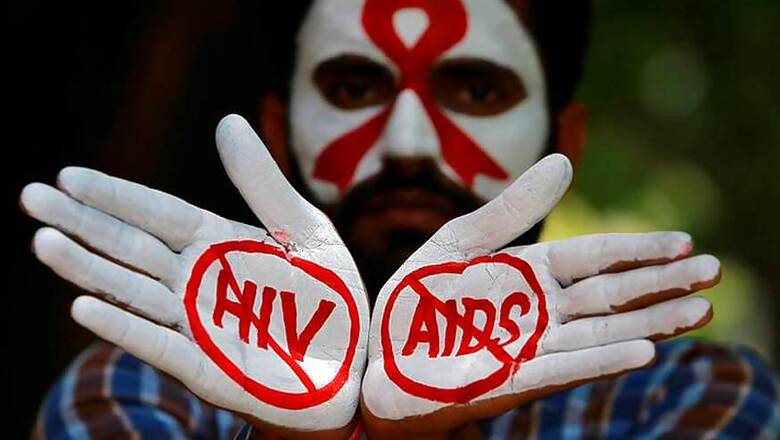
views
New Delhi: Five states in India have bucked the national trend with new infections of HIV increasing last year as compared to 2010. In other states, the rate at which new infections were reducing has worryingly slowed down.
These were some of the findings of the India HIV estimations report 2017, released by National Aids Control Organisation (NACO) on Friday.
“There is no room for complacency”, said the report, while noting that although HIV infections had declined by more than 60% since 2000, “the rate of their decline has been much slower in recent years and far behind the pace needed to reach the 2020 target.”
It argued for careful monitoring and focused strategies to deal with the challenge if India wanted to deliver on its commitment to end AIDS by 2030.
The new hotspots
Five states where new infections had increased in 2017, in comparison to 2010 were Arunachal Pradesh (65%), Assam (37%), Mizoram (18%), Meghalaya (10%) and Uttarakhand (4%).
Moreover while the rest of the country saw a decline in the rate of infections, there were variations in this. Delhi, Chhatisgarh, Jammu and Kashmir, Manipur and Nagaland all saw that the rate of decline was 10 percent or less.
This finding echoes the worrying flagged by the National Strategic Plan for HIV/AIDS and STI 2017-24 when it was released in December 2017. The plan had found that states that were earlier classified as “high prevalence” were showing steady declines – while a new trend of rising infections were found in states earlier classified as low prevalence.
The plan suggested that the high prevalence states had “a comparatively more robust public health infrastructure and have addressed the HIV epidemic relatively early on”.
The ‘emerging states’ required an urgent scaling up medical infrastructure to avert new infections and health expenditure in the long run, it said.
An official of NACO added, “The HIV epidemic in India has predominantly been sexually-driven. But over the years, we have found that injecting drug use has led to an increased contribution in infections from certain geographical areas such as the north-east, Punjab, Uttar Pradesh, Bihar, Delhi and Uttarakhand.”
The slowdown
Preventing new cases of HIV has consistently remained the mainstay for India’s response to AIIDS and in the past has resulted in significant reductions. The HIV incidence is estimated to have declined from 0.64 per 1,000 persons to 0.07 per thousand in 2017 – or put simply, 64 new cases of infection in a lakh to just 7 new cases.
The problem, the report explained, was that the rate at which the numbers of new cases were reducing was worryingly slowing down.
So from 2010 to 2017, the numbers were down from 0.1 per thousand persons to 0.07 in 2017 – or 10 cases per lakh persons to 7 persons.
Between 2010 and 2017, the rate at which new infections were on the decline had dipped by 27%, the report said. While India fares better than the global average of 16%, the report argued for “new impetus”, “new models and modus operandi”.
So for instance, while Telangana has seen a dip in new infections, with 9,324 new cases in 2017 and its larger size, the state has contributed the most in terms of new HIV cases the country.
Other populous states like Bihar, West Bengal, Delhi, Jharkhand and Haryana have also seen a slowdown.




















Comments
0 comment